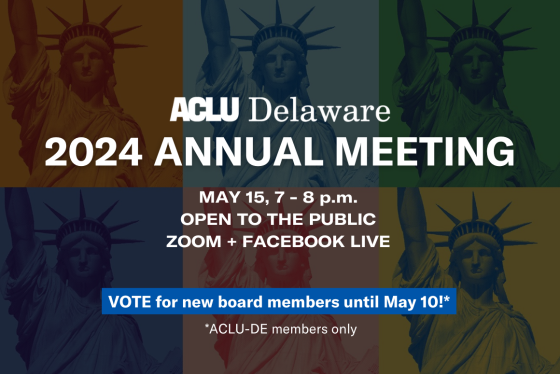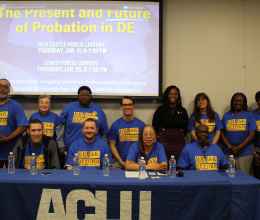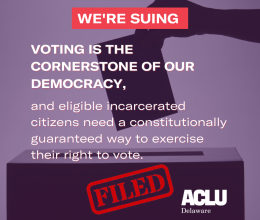The law is always evolving. If you have access to a prison law library, it is a good idea to confirm that the cases and statutes cited below are still good law. The purpose of this document is to provide general information about the law – it does not constitute legal advice.
The Constitution provides protection for the exercise of sincerely held religious beliefs.
Generally, beliefs that are "religious" and "sincerely held" are protected by the Free Exercise Clause of the First Amendment to the United States Constitution. See e.g., Kay v. Bemis, 500 F.3d 1214, 1218 (10th Cir. 2007) (citing Snyder v. Murray City Corp., 124 F.3d 1349, 1352 (10th Cir. 1997)).
What qualifies as a religion or religious belief?
Courts often disagree about what qualifies as a religion or a religious belief. So-called "mainstream" belief systems, such as Christianity, Islam and Judaism, are universally understood to be religions. Less well-known or nontraditional faiths, however, have had less success being recognized as religions. While Rastafari, Native American religions, and various Eastern religions have generally been protected, belief systems such as the Church of the New Song, Satanism, the Aryan Nations, and the Five Percenters have often not received protection. The Supreme Court has never defined the term "religion." However, in deciding whether something is a religion, lower courts have asked whether the belief system addresses "fundamental and ultimate questions," is "comprehensive in nature," and presents "certain formal and external signs." See e.g., Africa v. Pennsylvania, 662 F.2d 1025, 1032 (3d Cir. 1981); see also Dettmer v. Landon, 799 F.2d 929, 931-32 (4th Cir. 1986). If you want a nontraditional belief system to be recognized as a religion, it may help if you can show how your beliefs are similar to other, better-known religions: Does your religion have many members? Any leaders? A holy book? Other artifacts or symbols? Does it believe in a god or gods? Does it believe that life has a purpose? Does it have a story about the origin of people? But see Kaufman v. McCaughtry, 419 F.3d 678, 681-82 (7th Cir. 2005) (holding that, in the context of the First Amendment, atheism can be a religion; religion need not be based on a mainstream faith or a belief in a Supreme Being, but instead “when a person sincerely holds beliefs dealing with issues of 'ultimate concern' that for her occupy a 'place parallel to that filled by . . . God in traditionally religious persons,' those beliefs represent her religion") (quoting in part Fleischfresser v. Dirs. of Sch. Dist. 200, 15 F.3d 680, 688 n.5 (7th Cir. 1994)).
What qualifies as a "sincerely held belief"?
In addition to proving that something is a religion, you must also convince prison administrators or a court that your beliefs are sincerely held. In other words, you must really believe it. In deciding whether a belief is sincere, courts sometimes look to how long a person has believed something and how consistently he or she has followed those beliefs. See Sourbeer v. Robinson, 791 F.2d 1094, 1102 (3d Cir. 1986) (upholding a finding of insincerity where prisoner only went to religious service 5 times in one year and did not designate a spiritual adviser to visit him); Vaughn v. Garrison, 534 F. Supp. 90, 92 (E.D.N.C. 1981) (upholding a prison’s requirement that an inmate request a pork free diet before qualifying him as a member of the Islamic faith and allowing him to order a Muslim prayer rug). Just because you have not believed something your entire life, or because you have violated your beliefs in the past, does not automatically mean that a court will find that you are insincere. See Reed v. Faulkner, 842 F.2d 960, 963 (7th Cir. 1988) (finding “the fact that a person does not adhere steadfastly to every tenet of his faith does not mark him as insincere”); Weir v. Nix, 890 F. Supp. 769, 775-76 (S.D. Iowa 1995) (finding periodic receipt of literature contrary to prisoner’s faith does not necessarily require a finding of insincerity). However, if you recently converted or if you have repeatedly acted in a manner inconsistent with your beliefs, you will probably have a hard time convincing a court that you are sincere.
The Constitution permits certain restrictions on the exercise of religion.
You have an absolute right to believe anything you want. You do not, however, always have a constitutional right to do things (or not do things) just because of your religious beliefs. For example, the constitutional right of free exercise of religion does not excuse anyone, including prisoners, from complying with a "neutral" rule (one not intended to restrict religion) of "general applicability" (one that applies to everyone in the same way) simply because it requires them to act in a manner inconsistent with their religious beliefs. See Employment Div., Dept. of Human Res. of Oregon v. Smith, 494 U.S. 872, 879 (1990) (denial of unemployment compensation benefits where claimants were dismissed as a result of religious use of peyote at Native American church is constitutional since ingestion of peyote was in contravention of Oregon drug law). A rule that applies only to a religious group is not generally applicable. See Church of the Lukumi Babalu Aye v. City of Hialeah, 508 U.S. 520, 543 (1993) (law prohibiting animal sacrifice was not generally applicable where asserted non-religious ends "were pursued only with respect to conduct motivated by religious beliefs").
In prison cases, courts permit certain restrictions on religious exercise. While "[p]rison walls do not form a barrier separating prison inmates from the protections of the Constitution," Turner v. Safley, 482 U.S. 78, 84 (1987), a prisoner’s rights may be limited due to the nature of incarceration itself and the valid penological objectives of the state. DeHart v. Horn, 227 F.3d 47, 50-51 (3d Cir. 2000). In Turner, the Supreme Court set out the factors that courts should consider when determining the validity of a regulation that limits an inmate’s First Amendment rights: 1) whether the regulation is a neutral one "reasonably related to legitimate penological interests;" 2) whether there remains alternative means for the prisoner to exercise his rights; 3) whether the accommodation would have a significant "ripple effect" on other prisoners, guards, or the allocation of prison resources; and 4) whether there exists an alternative to the regulation that would accommodate the prisoner’s rights at "de minimis cost to valid penological interests." Turner, 482 U.S. at 89-91.
This standard is not very protective of prisoners’ First Amendment rights. In O’Lone v. Estate of Shabazz, 482 U.S. 342 (1987), the Supreme Court upheld two regulations that effectively prohibited Muslim prisoners from attending Friday afternoon congregational services. The Court reasoned that although some prisoners were completely unable to attend services, the restrictions were reasonable because prisoners could practice other aspects of their faith. Id. at 351-52.
Protection under RFRA and RLUIPA: Expanded Statutory Protections for Religious Activities
Congress has passed two statutes providing heightened protection for religious exercise in prison. The Religious Freedom Restoration Act (RFRA) applies to federal and District of Columbia prisoners. O’Bryan v. Bureau of Prisons, 349 F.3d 399, 401 (7th Cir. 2003) (federal prisoners); Kikumura v. Hurley, 242 F.3d 950, 960 (10th Cir. 2001) (same); Jama v. U.S.I.N.S., 343 F. Supp. 2d 338, 370 (D.N.J. 2004) (immigration detainees); Gartrell v. Ashcroft, 191 F. Supp. 2d 23 (D.D.C. 2002) (District of Columbia prisoners). The Religious Land Use and Institutionalized Persons Act (RLUIPA) applies to state or local institutions that receive money from the federal government; this includes most local and every single state prison system. See Cutter v. Wilkinson, 544 U.S. 709, 716 n.4 (2005). However, RLUIPA cannot be used to bring suit against a state institution where the plaintiff seeks money damages. Sossamon v. Texas, 131 S.Ct. 1651, 1663 (2011); but see Centro Familiar Cristiano Buenas Nuevas v. City of Yuma, 651 F.3d 1163, 1169 (9th Cir. 2011) (municipal institutions may be sued for money damages for violations of RLUIPA).
Both RFRA and RLUIPA balance a prisoner’s right to exercise his or her religion against the government's interests. The general balancing test is that the government may not impose a substantial burden on a prisoner’s exercise of religious beliefs unless that burden (1) is in furtherance of a compelling governmental interest; and (2) is the least restrictive means of furthering that interest. RLUIPA additionally defines "religious exercise" to include "any exercise of religion, whether or not compelled by, or central to, a system of religious belief." 42 U.S.C. § 2000cc-5(7)(A).
This test is more protective than the Turner standard that applies to Free Exercise claims under the First Amendment. Therefore, if a religious practice was protected under the Free Exercise Clause, it will probably be protected under RFRA or RLUIPA. And even if a practice was not protected under the Free Exercise Clause, it may still be protected under RFRA or RLUIPA.
The cases below discuss the application of the First Amendment, RFRA and RLUIPA to various aspects of religious exercise.
Religious foods in prison
Prisoners have enjoyed a fair amount of success with claims protecting religious dietary
practices. E.g., Ford v. McGinnis, 352 F.3d 582, 597 (2d Cir. 2003) (“[A] prisoner has a right to a diet consistent with his or her religious scruples”); Lomholt v. Holder, 287 F.3d 683 (8th Cir. 2002) (prisoner’s allegation that he was punished for religious fasting stated a First Amendment claim).
Courts have often found that prisoners have a right to avoid eating foods that are forbidden by their religious beliefs. See Moorish Science Temple of Amer., Inc. v. Smith, 693 F.2d 987, 990 (2d Cir. 1982). Where reasonable accommodations by the prison can be made to provide religious meals, courts have ordered such diets be made available to prisoners. See Koger v. Bryan, 523 F.3d 789, 801 (7th Cir. 2008) (failure to provide vegetarian diet to member of the Ordo Templi Orientis religion violated RLUIPA); Ashelman v. Wawrzaszek, 111 F.3d 674, 678 (9th Cir. 1997) (First Amendment requires provision of kosher diet where prison operations not impacted); but see Baranowski v. Hart, 486 F.3d 112, 122, 126 (5th Cir. 2007) (denial of Kosher meals for Jewish prisoner does not violate the First Amendment or RLUIPA). Courts have also required accommodations for special religious observances related to meals. See Abdulhaseeb v. Calbone, 600 F.3d 1301, 1320 (10th Cir. 2010) (reversing summary judgment in Muslim inmate’s challenge to denial of Halal meat for Islamic feast); Lovelace v. Lee, 472 F.3d 174, 192, 201-02 (4th Cir. 2006) (removal of inmate from Ramadan observance pass list, when he allegedly broke fast, states a claim under RLUIPA and the Establishment Clause); Levitan v. Ashcroft, 281 F.3d 1313, 1322 (D.C. Cir. 2002) (reversing summary judgment for defendants in Catholic prisoners’ challenge to denial of communion wine); Makin v. Colorado Dep’t of Corrections, 183 F.3d 1205, 1211-14 (10th Cir. 1999) (failure to accommodate Muslim fasting requirements during Ramadan infringed on First Amendment rights). Some courts have rejected efforts by prison officials to charge prisoners for religious diets. See Beerheide v. Suthers, 286 F.3d 1179, 1192 (10th Cir. 2002) (no rational relationship between penological concerns and proposed co-payment for kosher diet).
Prisoners requesting highly individualized diets, however, have rarely been successful. See DeHart v. Horn, 390 F.3d 262, 269-72 (3d Cir. 2004) (officials not required to provide Mahayana Buddhist diet requiring “individualized preparation” including avoidance of “pungent vegetables” such as garlic and onions); compare Shakur v. Schriro, 514 F.3d 878, 885 (9th Cir. 2008) (Muslim inmate for which vegetarian diet causes gastrointestinal distress states a claim under the Free Exercise clause when the prison refused to alternatively provide a kosher meat diet even where his issue with the vegetarian diet was medical and not religious in nature).
Religious services
Notwithstanding the Supreme Court’s decision in Estate of Shabazz, courts have generally protected prisoners from interference with their ability to attend religious services or engage in prayer. Mayweathers v. Newland, 258 F.3d 930, 938 (9th Cir. 2001) (upholding injunction against disciplining Muslim prisoners for missing work to attend Friday services); Omar v. Casterline, 288 F. Supp. 2d 775, 781 (W.D. La. 2003) (refusal to tell Muslim prisoner the date or time of day to allow him to pray and fast states First Amendment claim); Youngbear v. Thalacker, 174 F. Supp. 2d 902, 912-15 (N.D. Iowa 2001) (one year delay in providing sweat lodge for Native American religious activities violates First Amendment). However, prison facilities may not be required to provide religious services for every religion within the prison. Smith v. Kyler, 295 Fed.Appx. 479, 481-83 (3d Cir. 2008) (First Amendment and RLUIPA not violated by prison policy that only provided a chaplain to lead services in the largest faith groups and prohibited group worship in the absence of an approved, volunteer faith group leader); Murphy v. Missouri Dept. of Correction, 372 F.3d 979, 983-84 (8th Cir. 2004) (safety and security interests justified denial of group worship rights to religion that promoted racial segregation).
Sabbath
Courts have also found that restrictions requiring prisoners to violate the Sabbath or other religious duties violate the First Amendment. McEachin v. McGuinnis, 357 F.3d 197, 204-05 (2d Cir. 2004) (intentionally giving Muslim prisoner an order during prayer may violate First Amendment); Love v. Reed, 216 F.3d 682 (8th Cir. 2000) (failure to provide inmate with food from the prison’s kitchen on Saturday for his consumption on Sunday violates the Establishment Clause where the inmate’s sincerely held religious belief prevented him from leaving his cell or working on the Sabbath, or eating food prepared by others on that day); Hayes v. Long, 72 F.3d 70 (8th Cir. 1995) (requiring Muslim prisoner to handle pork violated First Amendment); Murphy v. Carroll, 202 F. Supp. 2d 421, 423-25 (D. Md. 2002) (prison officials’ designation of Saturday as cell-cleaning day violated Free Exercise rights of Orthodox Jewish prisoner).
Religious objects
Courts have often concluded that prison officials may generally ban religious objects if they can make a plausible claim that the objects could pose security problems. See McFaul v. Valenzuela, 684 F.3d 564, 575-77 (5th Cir. 2012) (neo-Pagan medallions); Hammons v. Saffle, 348 F.3d 1250 (10th Cir. 2003) (Muslim prayer oils); Spies v. Voinovich, 173 F.3d 398, 406 (6th Cir. 1999) (Buddhist religious materials such as incense and a wooden sculpture of a fish); Mark v. Nix, 983 F.2d 138, 139 (8th Cir. 1993) (rosary with plastic crucifix); compare Kay v. Bemis, 500 F.3d 1214, 1221 (10th Cir. 2007) (tarot cards). However, prison officials must present evidence that such restrictions responded to valid security concerns. Boles v. Neet, 486 F.3d 1177, 1182-83 (10th Cir. 2007) (warden’s refusal to allow prisoner to wear religious garments required by his Orthodox Jewish religion violated Free Exercise rights where no penological interest asserted to justify refusal). Also, prison officials may not ban some religious objects and not others without any justification. See Sasnett v. Litscher, 197 F.3d 290, 292 (7th Cir. 1999) (Free Exercise Clause violated where prison regulation banned the wearing of Protestant crosses but allowed Catholic rosaries without any reasonable justification for distinction). Courts have also concluded that prison officials are not required to provide religious objects as long as prisoners are free to purchase or obtain the objects themselves. See Frank v. Terrell, 858 F.2d 1090, 1091 (5thCir. 1988).
Religious literature
Courts have concluded that, although officials may limit the amount of reading material that a prisoner keeps in his or her cell, officials may not bar religious literature when other literature is permitted and that prisoners generally have a right to read the primary text of their faith tradition. See e.g., Sutton v. Rasheed, 323 F.3d 236, 250-58 (3d Cir. 2003) (denying a prisoner’s access to Nation of Islam materials solely on the basis that they were nonreligious materials, when other prisoners allowed a Bible or Qur’an, violates the First Amendment); Jesus Christ Prison Ministry v. California Dep’t of Corrections, 456 F. Supp. 2d 1188, 1201-02 (E.D. Cal. 2006) (policy barring prisoners from receiving religious books from organizations not on approved vendor list is unconstitutional); but see Borzych v. Frank, 439 F.3d 388, 390-92 (7th Cir. 2006) (ban on books inmate alleges necessary for his Odinist religion did not violate the First Amendment or RLUIPA where the prison system contends that they are non-religious books intended to promote white supremacist violence).
Personal grooming
Prisoners have rarely been successful in challenging grooming and dress regulations. Courts have generally upheld restrictions on haircuts. See Hines v. South Carolina Dep’t of Corrections, 148 F.3d 353, 356 (4th Cir. 1998); Sours v. Long, 978 F.2d 1086, 1087 (8th Cir. 1992). This has also been true with regard to headgear and other religious attire. See Muhammad v. Lynaugh, 966 F.2d 901, 902-03 (5th Cir. 1992) (upholding restriction on the wearing of Kufi caps where corrections officials testified they can be used to hide weapons or insight violence); Sutton v. Stewart, 22 F. Supp. 2d 1097, 1105-06 (D. Ariz. 1998) (upholding restriction on the wearing of Kufi caps in order to restrict inmates’ ability to identify themselves as members of rival groups and finding substantial burden on guards to distinguish those authorized, and those not authorized to wear Kufis); but see Muslim v. Frame, 891 F. Supp. 226, 232-33 (E.D. Pa. 1995) (in RFRA challenge to rule against wearing Kufis in common areas, prison officials failed to produce evidence of added costs alleged due to additional searches, or evidence that Kufis were gang symbols or obstructions in identifying prisoners); Luckette v. Lewis, 883 F. Supp. 471, 481-82 (D. Ariz. 1995) (where prison officials in RFRA case did not identify any safety concerns with head coverings other than gang colors, defendants and plaintiff directed to agree on an acceptable head covering).
A prison rule about grooming may be vulnerable to attack if it is not enforced equally against all religions. See Sasnett v. Litscher, 197 F.3d 290, 292 (7th Cir. 1999) (abrogated on other grounds by Bridges v. Gilbert, 557 F.3d 541, 551 (7th Cir. 2009); Swift v. Lewis, 901 F.2d 730, 731-32 (9th Cir. 1990) (where prison permitted long hair and beards for some religions but not others, it must present evidence justifying this unequal treatment); Wilson v. Moore, 270 F. Supp. 2d 1328, 1353 (N.D. Fla. 2003) (Native American prisoner denied right to wear religious headband due to alleged security concerns raised potential First Amendment and Equal Protection claims where Jewish and Muslim prisoners allowed to wear headgear at all times).










